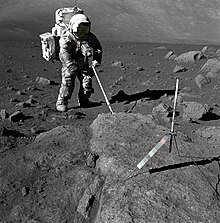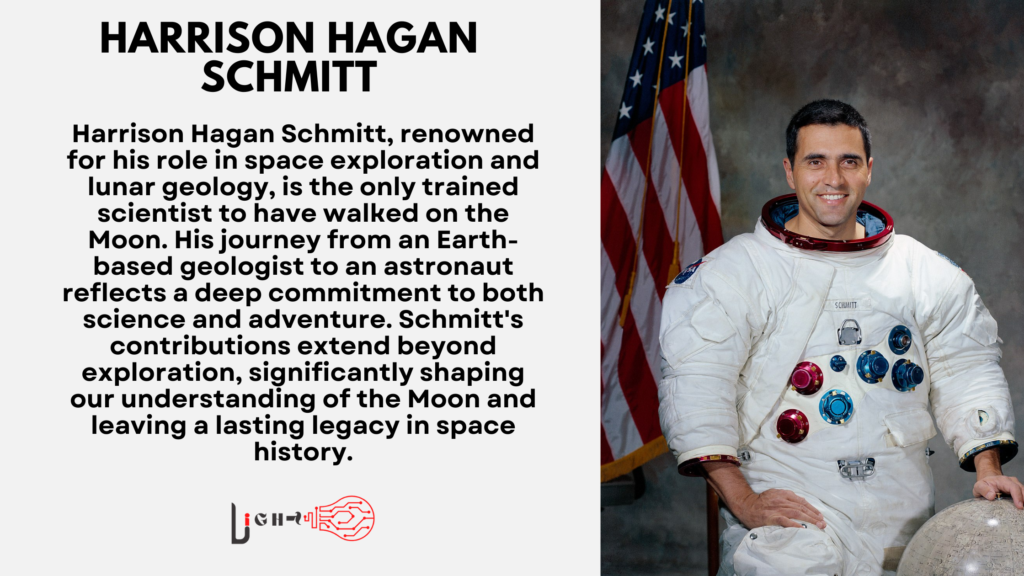Harrison Hagan Schmitt is a name synonymous with space exploration and lunar geology. As the only trained scientist to walk on the Moon, his contributions go beyond the realm of exploration, impacting our understanding of lunar science. Schmitt’s journey from a geologist on Earth to an astronaut on the Moon was marked by dedication to both science and adventure. In this blog, we will take a detailed look at Schmitt’s life, career, and lasting legacy in space history.
Early Life and Education
Born on July 3, 1935, in Santa Rita, New Mexico, Harrison Schmitt had a strong connection to science from a young age. His fascination with geology led him to pursue degrees in the subject. Schmitt attended the California Institute of Technology, where he earned a Bachelor of Science in Geology in 1957. He furthered his education at Harvard University, where he obtained a Ph.D. in Geology in 1964. His academic background set the stage for a career that would take him to the lunar surface.
Schmitt’s early life was deeply influenced by the rugged landscapes of New Mexico, fostering a passion for Earth sciences. His path was unique among astronauts, as most were test pilots or military personnel. Instead, Schmitt represented the scientific community, and his knowledge of geology played a crucial role in his selection as a NASA astronaut.
Career as a Geologist and Scientist
Before joining NASA, Schmitt had already established himself as a prominent geologist. His work focused on studying volcanic rocks, particularly in Norway and the western United States. Schmitt’s scientific expertise earned him a position at NASA in 1965, where he began training for the Apollo missions. Unlike many of his astronaut peers, Schmitt brought a scientific perspective to space exploration, which later proved invaluable during Apollo 17.
His career as a scientist was characterized by a dedication to understanding planetary geology. Schmitt’s contributions were not limited to the Moon, as he worked on various studies related to the Earth and other celestial bodies. His transition from geologist to astronaut exemplified the merging of science with exploration, marking him as a pivotal figure in space research.
Apollo 17 and the Moon Landing
Apollo 17, the final mission of NASA’s Apollo program, holds special significance due to the presence of Harrison Schmitt. Selected as the lunar module pilot, Schmitt became the first professional scientist to walk on the Moon, providing a unique perspective on the mission’s geological objectives.
The Lunar Geologist
During Apollo 17, Schmitt’s primary task was to collect lunar samples and conduct geological surveys. His expertise in geology allowed him to identify key areas of interest on the lunar surface, including the Taurus-Littrow Valley, which was selected as the landing site due to its rich geological diversity. Schmitt’s trained eye led to the discovery of the famous “orange soil,” which provided insights into lunar volcanic activity.
Achievements on Apollo 17
Beyond sample collection, Schmitt’s contributions included detailed geological observations that expanded our understanding of the Moon’s history. The Apollo 17 crew spent over three days on the lunar surface, conducting multiple extravehicular activities (EVAs). Schmitt’s work, alongside Commander Eugene Cernan, resulted in a wealth of data that continues to influence lunar research today. His role as a scientist-astronaut made the mission one of the most scientifically productive of the Apollo program.

How TIROS-1 Revolutionized Space and Meteorology
To know more click here:https://light.vintbit.com/general-knowledge/tiros-1-weather-satelite/
Post-NASA Career and Contributions
After his time at NASA, Harrison Schmitt transitioned into politics and academia. He served as a U.S. Senator for New Mexico from 1977 to 1983, advocating for scientific research and space exploration. Schmitt continued his involvement in geological studies, particularly concerning lunar and Martian exploration. He authored several books, including Return to the Moon, in which he discussed the potential for lunar colonization and the importance of lunar resources.
Schmitt’s post-NASA career is a testament to his enduring commitment to space science and exploration. He remained active in promoting the advancement of planetary science, working with various research institutions and contributing to studies on future lunar missions. His influence extended beyond the political arena, impacting the direction of space research for decades.
Legacy of Harrison Schmitt
Harrison Schmitt’s legacy is one of scientific achievement and space exploration. As the only scientist to walk on the Moon, his work during Apollo 17 stands out in the annals of space history. Schmitt’s contributions to lunar geology have shaped our understanding of the Moon, and his advocacy for space exploration continues to inspire future generations.
Schmitt’s role in space exploration goes beyond his accomplishments on Apollo 17. His dedication to science, both in his pre- and post-NASA careers, has left an indelible mark on the field of planetary geology. Today, his work serves as a foundation for ongoing research and future missions aimed at exploring the Moon and beyond.

